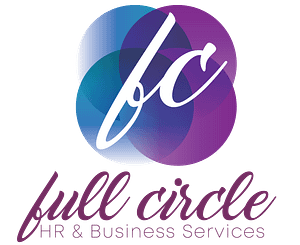A recent WorkSafe Victoria prosecution has delivered a strong reminder to all business owners: failing to prevent workplace sexual harassment is not only an HR issue, but a serious workplace safety risk – and a costly one.
The Case
A Victorian employer has been convicted and fined $100,000 plus more than $6,000 in costs, after one of its Directors engaged in repeated, inappropriate behaviour towards an employee. The company is now in Administration.
WorkSafe Victoria prosecuted the business under Section 21 of the Occupational Health and Safety Act 2004 (Vic) which is the duty to provide a working environment that is safe and without risks to health. This includes protecting employees from psychological hazards such as sexual harassment.
Importantly, the fine was not issued solely because of the Director’s behaviour, but also because of the company’s systemic failures to prevent and respond to such behaviour. The court found the business had:
- NO written policies addressing workplace behaviour or sexual harassment,
- NO reporting mechanisms for employees to raise concerns safely, and
- NO training provided to workers or Managers on expected standards of conduct.
This combination of factors created a psychologically unsafe workplace, and the business was held accountable for failing to implement basic preventative measures.
Learn more: https://www.worksafe.vic.gov.au/news/2025-05/toy-company-fined-100000-over-sexual-harassment-risk
Why This Matters to Small Business Owners
This is the first time in Victoria that WorkSafe has secured a conviction for failing to manage the risk of sexual harassment as a psychological hazard under OHS legislation. It marks a significant shift in enforcement priorities and serves as a clear warning to all businesses, regardless of size or industry.
Importantly, this fine was issued before Victoria’s new Psychological Health Regulations are due to take effect on 1 December 2025. This confirms that the existing OHS Act already requires employers to manage psychosocial risks such as harassment, and that enforcement can and will occur, even without the more detailed regulatory framework still to come.
From December, the Occupational Health and Safety (Psychological Health) Regulations will provide greater clarity around what is expected of employers, but the underlying duty already exists. Businesses are expected to act now, not wait.
Key Lessons
Sexual harassment is a workplace safety issue:
Under Victorian OHS laws, businesses must protect workers from all foreseeable hazard, including psychological harm caused by bullying or harassment.
Small size is not a defence:
The duty to provide a safe workplace applies to all businesses, whether you employ one person or 100.
Leadership behaviour sets the tone:
When harassment stems from Senior Managers or Business Owners, WorkSafe considers this an aggravating factor. The law expects clear leadership in building a safe, respectful culture.
Being proactive is essential:
You are required to prevent harassment, not just respond when something goes wrong. It is no longer acceptable to rely on informal approaches or general expectations of respectful behaviour.
What Your Business Must Have in Place
To meet your obligations and reduce risk, your business should implement the following:
Written policies and procedures:
You must have a clearly documented workplace behaviour and sexual harassment policy. It should define unacceptable conduct, outline how to make a complaint, and explain the investigation process.
Safe reporting channels:
Make it clear and safe for workers to report issues, especially if the alleged perpetrator is a manager or owner. Options could include an external contact or anonymous system.
Training for all staff and managers:
Everyone in your business must understand what sexual harassment is, how to prevent it, and what to do if it occurs. This includes managers, who need training on their legal responsibilities.
Respectful workplace culture:
Creating a psychologically safe workplace requires active leadership, regular communication, and visible enforcement of your standards.
Inclusion in WHS risk management:
Psychosocial hazards like sexual harassment should be included in your risk assessments. You must identify, assess and control these risks as you would with any physical hazard.
Your Next Step
This case is a timely and important reminder for small business owners to review whether their current practices would stand up to scrutiny.
Ask yourself:
Have we taken reasonable steps to prevent sexual harassment in our workplace?
Do our people know what behaviour is expected – and what to do if things go wrong?
Are we treating this as a safety issue, not just an HR one?
If the answer to any of these is “no” or “not sure,” now is the time to act.
The Fair Work Commission offers excellent training to guide your workers in understanding sexual harassment. Their Workplace Sexual Harassment Module provides practical information on:
- recognising and responding to sexual harassment
- reporting processes
- adverse action
- workplace obligations to prevent sexual harassment
- the role of the Fair Work Commission
It’s a concise, 20-minute course designed to ensure everyone knows their rights and roles in creating a safe workplace. Importantly, it can be downloaded and imbedded into your internal platforms at no cost.
Learn more in our article below:
FCHR Member Benefits
We’re thrilled to offer pro-active support to our FCHR Members, and we’re currently building your guided preparations and response to these incoming Regulations ahead of December 2025. Look out for our communications in August.
